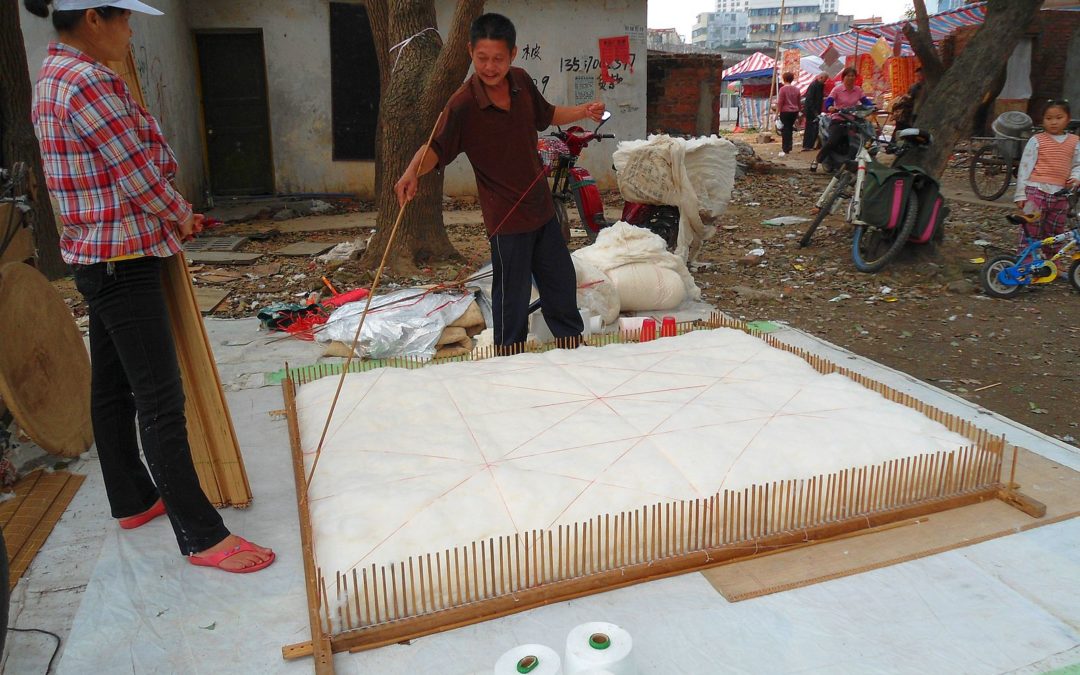The world of quilt batting is all so simple in nature, add layers of fiber to keep one warm and wrap with cotton to make a quilt.
Now a days though the numerous manufacturers and types can almost be overwhelming.
First you want to decide how your cover is going to be used:
- Sending to your mother in Florida
- A new born baby,
- Friend near the equator?
You would want to choose a lightweight, breathable material for your quilt batting, I recommend thin natural cotton batting.
On the other hand if you are sending the finished quilt to your dear nephew, who camps in the dead of winter, in Alaska, let’s say, then you may want to look more in the high loft quilt batting.
The higher the loft the more hot air the batting can hold, thus creating more of an insulated layer.
This ensures warmth all throughout the night. Choosing an acrylic, for your batting material, means your body heat will not be disturbed by a cold wind, or very light mist, due to the plastic like nature of the man made materials of acrylic.
The only other determination to be made is how large should our batting be in order to make our quilting experience easy and painless.
I always try to keep my batting slightly larger than my quilt top, so I know I have plenty of room to stitch and trim before binding.
Trust me, there is nothing worse than having a beautiful top, a nicely quilted pattern throughout, only then to come up short of batting on one side of your piece, leaving an empty cotton shell!
It’s heartbreaking really.
So just be sure you have plenty around the edges and all will be well when you go to trim and bind.
The last but not least popular question I receive about batting is, why on earth are there different colors of batting, they are just going inside of your quilt. Well this is for two reasons.
First- the color of the batting, when using light color pieces on your quilt, can be seem through the top. For example a cream of white block can clearly see the batting color underneath, so one should use cream for a cream quilt or white for a white, ect.
The second reason comes from the tiny pieces of fuzz that will appear as your do your actual quilting on the layers together, if you have a black top and a white batting, tiny fuzz balls start to develop around the needle depression points, making your quilt look unclean and dirty.
Ta-Da quilt batting 101, I hope this helps some of the new kids on the block out there. Happy Stitching!

